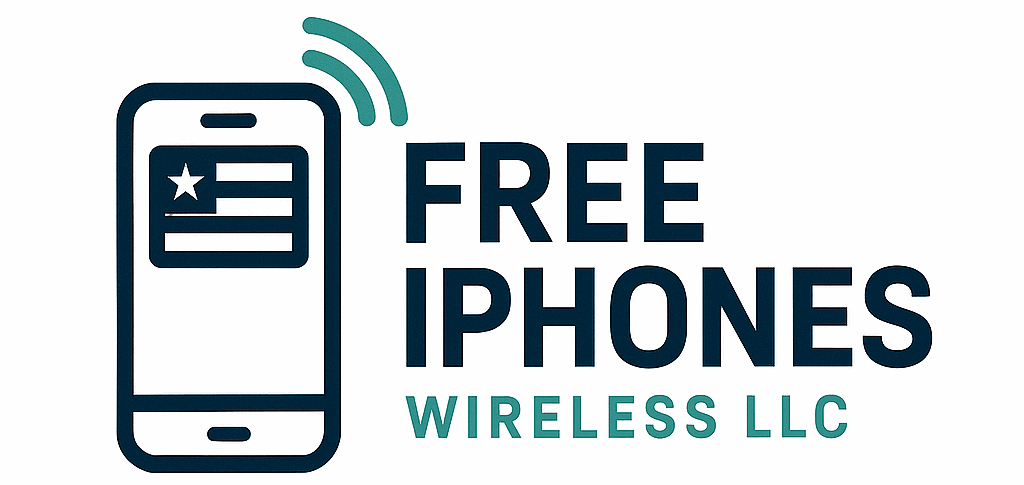Free Government iPhone: Lifeline, State & Nonprofit Help
No Phone, no internet, no options? Not Anymore. In 2025, staying connected means jobs, schools, doctors, and emergencies. Yet millions still live without a working smartphone or stable internet connection. The good news is that free and discounted government programs still exist. You need to know where to look.
This guide cuts through the noise, covering what is active (like Lifeline), what is gone (like ACP), and which hidden state programs can get you back online fast.

Lifeline Program
The Lifeline Program, managed by the FCC, offers a monthly discount on phone or internet services for eligible low-income households nationwide.
Key Benefits
- $9.25/month discount on one phone or internet line
- $34.25/month on Tribal lands
- Service-only benefit (no federal device subsidy)
Eligibility Criteria
- Household income at or below 135% of the Federal Poverty Guidelines, or
- Participation in SNAP, Medicaid, SSI, FPHA, Veterans Pension, or Tribal-specific assistance programs
How to Apply
- Visit LifelineSupport.org and complete the National Verifier application
- Or apply through a participating phone/internet provider
Affordable Connectivity Program (ACP) – Now Ended
The Affordable Connectivity Program (ACP) was a temporary federal initiative created to help Americans stay connected during the pandemic.
Benefits Offered
- Up to $30/month discount on internet service ($75/month for households on Tribal lands)
- One-time $100 discount toward a laptop, tablet, or smartphone (with a $10–$50 co-payment)
Status
- ACP officially ended in June 2024 due to a lack of funding. No new enrollments are accepted, but some Lifeline programs have absorbed partial benefits.

State-Based Internet Assistance Programs
New York Affordable Broadband Act (ABA)
- Coverage: New York State
- Benefits: ISPs must offer 25 Mbps for $15/month or 200 Mbps for $20/month
- Device: Not included
- Eligibility: Similar to Lifeline (e.g., SNAP, Medicaid, public housing)
- Apply: Contact your ISP and request the ABA plan
Big Apple Connect (NYC)
- Coverage: NYC Housing Authority (NYCHA)
- Benefits: Free 300 Mbps internet + basic cable
- Device: Free router, modem, cable box (no computer)
- Eligibility: NYCHA residents (no income test beyond residency)
- Apply: Contact Optimum or Spectrum to activate
Chicago Connected
- Coverage: Chicago, IL (CPS families)
- Benefits: Free high-speed internet (Comcast/RCN or mobile hotspot) for up to 4 years
- Device: Hotspot included; computers via schools (varies)
- Eligibility: K-12 CPS students with no reliable internet + low-income household
- Apply: Invitation from CPS; use activation code to enroll
EveryoneOn (Nonprofit)
- Coverage: Nationwide
- Benefits: Lists internet plans ($10–$20/month) from ISPs
- Device: Refurbished computers ($100 average); no direct giveaways
- Eligibility: Uses filters for SNAP, Medicaid, etc., to match with offers
- Apply: Visit EveryoneOn.org and search by ZIP code
PCs for People (Nonprofit)
- Coverage: Nationwide
- Benefits: Unlimited 4G/5G mobile internet for $15/month
- Device: Refurbished desktops/laptops ($0–$150)
- Eligibility: Income ≤ 200% FPL or participation in SNAP, WIC, etc.
- Apply: pcsforpeople.org
Comcast Internet Essentials
- Coverage: 39 states (Comcast/Xfinity areas)
- Benefits: 75 Mbps internet for $14.95/month (100 Mbps for $29.95)
- Device: Laptop/Chromebook for $149.99
- Eligibility: SNAP, Medicaid, HUD housing, SSI, WIC, NSLP, etc. + no recent Comcast service
- Apply: internetessentials.com
Access from AT&T
- Coverage: 21 states (AT&T areas)
- Benefits: Up to 100 Mbps internet for $30/month
- Device: Not included
- Eligibility: SNAP, SSI, Medicaid, NSLP, income ≤ 200% FPL, + no recent debt to AT&T
- Apply: att.com/access
Spectrum Internet Assist
- Coverage: 41 states (Spectrum areas)
- Benefits: 50 Mbps internet for $24.99/month; free modem
- Device: Not included
- Eligibility: NSLP or seniors (65+) on SSI. No Spectrum service in the past year
- Apply: Online form or call Spectrum sales
Cox Connect2Compete
- Coverage: 18 states (Cox areas)
- Benefits: 100 Mbps for $9.95/month
- Device: Modem free; computers referred via donation partners
- Eligibility: K–12 household on SNAP, TANF, NSLP, or public housing
- Apply: cox.com/connect2compete
T-Mobile Project 10Million
- Coverage: Nationwide (T-Mobile coverage)
- Benefits: Free hotspot + 100 GB/year for 5 years (~8 GB/month)
- Device: Free hotspot; devices via schools
- Eligibility: NSLP-qualified K–12 student in household
- Apply: Through participating school districts
Conclusion!
Even with ACP gone, Americans still have numerous federal, state, and nonprofit options for getting connected. From free iPhones through Lifeline to high-speed home internet under ABA or Big Apple Connect, these programs ensure no one is left behind.
Check your state-specific offerings and choose the combination of program and provider that best meets your device and data needs.
FAQs
What is the best program for a free government iPhone in 2025?
The Lifeline program remains the most reliable federal option for receiving a free or discounted iPhone, depending on the provider.
Is the Affordable Connectivity Program (ACP) still available?
No, the ACP ended in June 2024 due to federal funding exhaustion. Eligible users are encouraged to switch to the Lifeline program for continued benefits.
Can I apply for both Lifeline and a state-based program?
Yes, in most cases. For example, New York residents may combine Lifeline with Big Apple Connect or the Affordable Broadband Act for enhanced benefits.
Do these programs provide brand-new iPhones?
Some providers offer refurbished but fully functional iPhones (e.g., iPhone SE, 7, XR, 11). Brand-new phones may be available through upgrade options or special stock releases.
How long does it take to receive my free phone or internet service?
After approval, most providers ship phones within 5 to 7 business days. Internet service installations depend on provider schedules.
Can undocumented immigrants apply for these programs?
Most federal and state programs require proof of identity and eligibility, such as a Social Security Number or government-issued ID, which may exclude undocumented applicants.
Where do I find the most updated list of programs?
Visit lifelinesupport.org and your state’s official broadband site. For nonprofit programs, check everyoneon.org or pcsforpeople.org.






